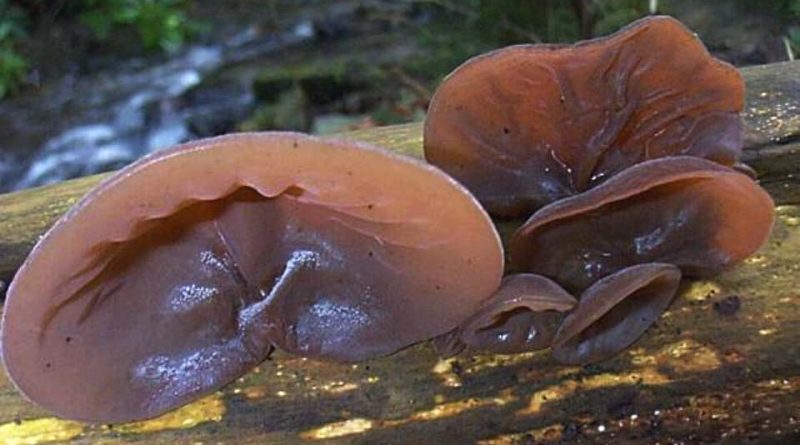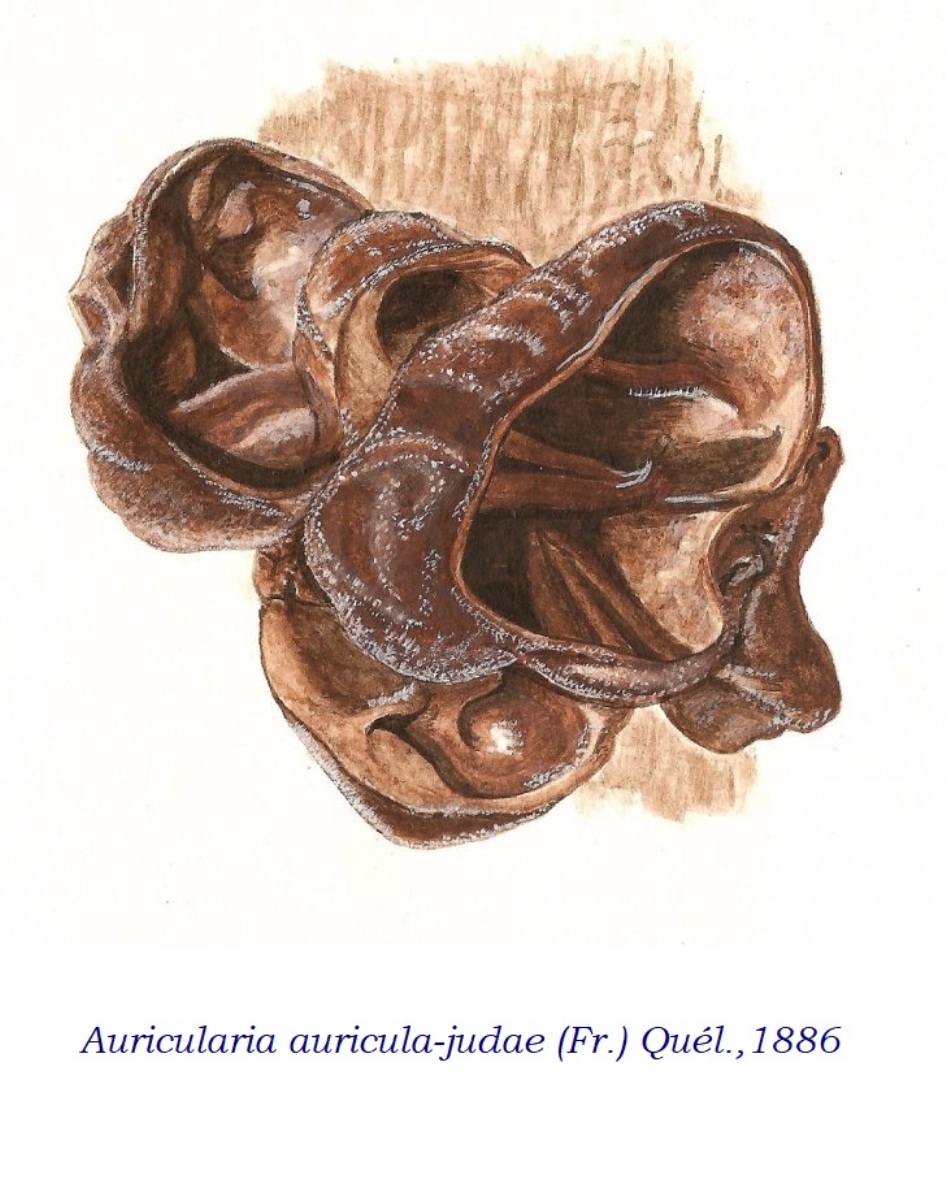Auricularia auricula-judae
Auricularia auricula-judae
The Ear of Judas (Auricularia auricula-judae (Fr.) Quél., 1886) is a fungus belonging to the family Auricularaceae.
Systematics –
From the systematic point of view it belongs to the Domain Eukaryota, Kingdom Fungi, Phylum Basidiomycota, Class Hymenomycetes, Subclass Phragmobasidiomycetidae, Order Auriculariales, Family Auriculariaceae and therefore to the Genus Auricularia and to the Species A. auricula-judae.
Etymology –
The term Auricularia derives from auricula, orecchietta, diminutive of auris, ear: for the shape of the carpophore. The specific epithet auricula-judae always comes from auricula orecchietta and Judae, from Giuda: for the shape of these mushrooms, taking the common name “ear of Judas”.
Geographic Distribution and Habitat –
The Auricularia auricula-judae is a fungus that grows on trunks of deciduous trees, especially elderberry, among the folds of the bark of dead or alive trunks up to about two meters in height. It is found in the period between late winter and spring, while it is quite rare during the autumn.
Recognition –
The Ear of Judas is distinguished, almost unmistakably, to have a fruiting body of 1-6 cm of diameter, sessile or with very short stem, shaped like a cup or ear, with the outer surface pruinosa, for the presence of hairs, and the veined, translucent, reddish-brown interior surface of elastic and gelatinous consistency, wavy edge. The flesh of this mushroom takes on a reddish-brown, gelatinous, elastic, cartilaginous color that over time becomes dry but returns to the gelatinous consistency after hydration; it has a sub-zero smell and a sweet taste, sometimes barely perceptible, but very pleasant on the palate due to its cartilage consistency. Microscopic analysis shows spores of 16-20 x 7-8 μm, cylindrical, allantoid, smooth, guttulate, with evident apical, white in mass. Basidi are cylindrical, up to 70 μm long, set transversely, with 4 long curved sterigms. The hyphae have a diameter of 1-4 μm and are ramified and gnarled.
Cultivation –
The Auricularia auricula-judae is a fungus cultivated and marketed mainly in China. Its cultivation is done on tree trunks.
Uses and Traditions –
The Ear of Judah is considered a fungus for many an excellent edible that can be eaten raw in salads, avoiding too frequent or excessive consumption, because it could give problems because it can cause Szechwan’s syndrome; according to others it is not a particularly valuable mushroom.
It is however a much appreciated and sought after mushroom especially in some oriental countries (China, Philippines, Japan), where it is cultivated and marketed; it is also very sought after in some parts of Italy.
Among the similar species we remember that even if the Auricularia auricula-judae is almost unmistakable fungus it can however be confused with several Ascomycetes belonging to the genus Peziza or with the mesenteric Tremella (which is not edible) that shares the same habitat, but has the surface much more hairy upper and lighter coloration. It can be confused with Guepinia rufa but it only grows in coniferous woods, and not in broad-leaved woods.
The auricularia-auricula-judae is a fungus with many properties and benefits for the health of the human body: it contains bioactive compounds that produce an anti-inflammatory, antioxidant, and strengthening of the immune system. It is perfect for low-calorie diets, with low fat content.
This mushroom is also rich in vitamins including vitamins B1, B2, B3, B5, vitamin C and vitamin PP. The B vitamins, are very important for the body and in particular for the normal functioning of the nervous system, for the apparatus and the muscular structure, for the proper functioning of the gastroenteric area, for the skin for the mouth, for hair and eyes. The antioxidant substances contained are vitamin C (ascorbic acid) and vitamin B3 or niacin or PP (nicotinic acid). The ascorbic acid contained in this fungus is useful for the cellular maintenance of the skin, as it acts in the production of collagen, inhibiting the oxidation of epithelial tissues and organs. Nicotinic acid is essential for the production of nucleotide nicotinamide adenine (NAD) and nicotinamide adenine dinucleotide phosphate (NADP).
Preparation Mode –
The Orecchio di Giuda is however very appreciated in some kitchens, especially in the oriental countries where it is a real delicacy for the palate. Its delicate taste goes well with almost all the ingredients. It is often used in soups, stewed meat dishes, mixed vegetables sautéed in Chinese. To cook them it is recommended to soak them in a bowl of hot water for about 15 minutes, after which they should be rinsed. It can be eaten raw together with the salad.
Guido Bissanti
Sources
– Wikipedia, the free encyclopedia.
– Cetto B., 2008. Real mushrooms, Saturnia, Trento.
– Pignatti S., 1982. Flora of Italy, Edagricole, Bologna.
– Conti F., Abbate G., Alessandrini A., Blasi C. (edited by), 2005. An annotated checklist of the Italian vascular flora, Palombi Editore.
Warning: Pharmaceutical applications and alimurgical uses are indicated for informational purposes only and do not in any way represent a medical prescription; there is therefore no liability for their use for curative, aesthetic or food purposes.


